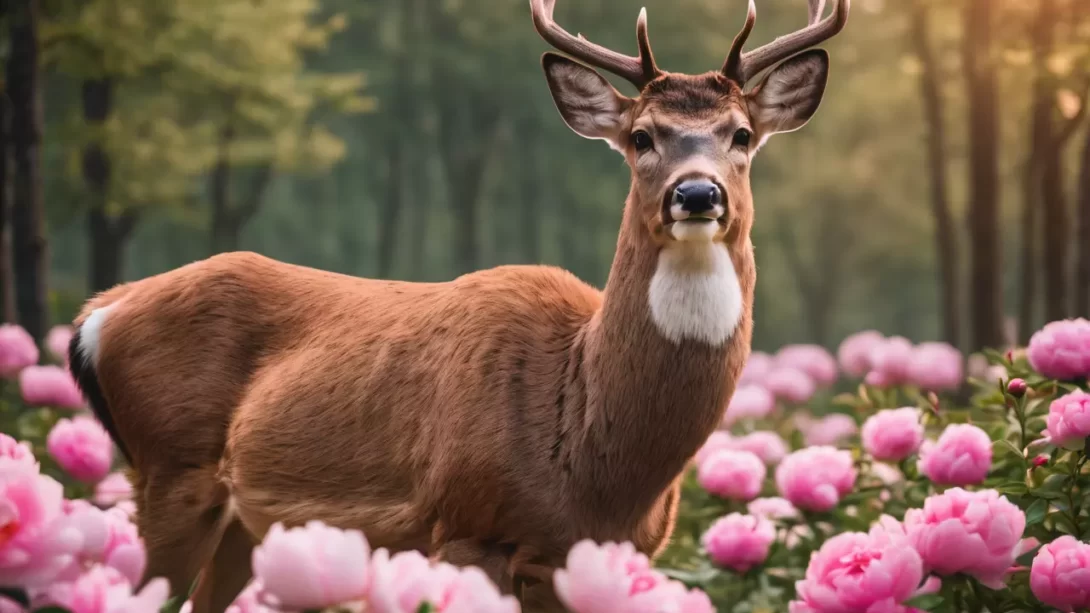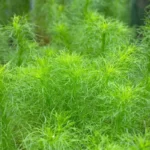Gardening in areas frequented by deer poses unique challenges, as these animals are often drawn to various plants and flowers. Among the many garden favorites, peonies stand out for their lush foliage and vibrant blooms. A common question among gardeners is whether these beautiful perennials are at risk of being devoured by deer. This article explores the relationship between deer and peonies, providing insight into how to successfully cultivate these flowers in deer-populated areas.
Deer Behavior in Gardens
Deer are known for their adaptable eating habits, which can pose a significant challenge for gardeners. Their diet largely depends on the availability of food in their habitat, and they often feed on a variety of plants and flowers found in gardens. Factors such as season, food scarcity, and the presence of predators can influence their choice of plants. Understanding these factors is key to determining whether your peonies are at risk of being eaten by deer.
Peonies and Deer: A Garden Analysis
Peonies are popular for their striking blooms and are often used as a focal point in garden design. They have a distinct scent, which can be attractive to humans, but it’s unclear how this scent affects deer. Regarding taste, peonies are not typically known for being a primary choice for deer, but in certain situations, like food scarcity, deer may be less selective. The question of whether peonies are a favorite of deer or merely a secondary choice when preferred food sources are scarce is a point of interest for many gardeners.
Deer-Resistant Qualities of Peonies
Peonies may possess certain qualities that make them less attractive to deer compared to other garden plants. One of the key factors is their texture. Peonies have a relatively thick and tough foliage, which is not the preferred choice for deer, especially when tender, softer plants are available. Additionally, the strong fragrance of peonies, while appealing to humans, might act as a natural deterrent to deer. Compared to plants that deer are known to favor, such as hostas or daylilies, peonies are often less targeted. However, it’s important to note that “deer-resistant” does not mean deer-proof. In situations of limited food availability or high deer populations, deer may still graze on plants they would otherwise avoid, including peonies.
Gardener Experiences and Reports
Anecdotal evidence from gardeners varies widely when it comes to deer feeding on peonies. In some gardens, peonies are left untouched, while in others, they have been subject to deer grazing. This variation could be attributed to regional differences in deer populations, the availability of alternative food sources, and individual deer taste preferences. Reports from gardening communities and studies on deer feeding patterns can offer additional insights. These experiences and reports suggest that while peonies are not the top choice for deer, they are not completely immune to being eaten, especially under certain environmental conditions.
Additional Strategies to Protect Peonies from Deer
For gardeners concerned about protecting their peonies from deer, there are several effective strategies. These include using deer repellents, which can be either commercial products or homemade remedies, to make the plants less appealing. Physical barriers, such as fencing, can also be an effective way to keep deer away from peonies and other vulnerable plants. Another approach is companion planting, where peonies are surrounded by plants known to be unattractive to deer, creating a natural deterrent. These methods can be used in combination to provide a more comprehensive solution for protecting peonies in areas with high deer activity.
Implementing Deer Deterrents in the Garden
Implementing effective deer deterrents is crucial for protecting peonies in deer-populated areas. Deer repellents, which can be either scent-based or taste-based, can discourage deer from nibbling on the plants. These repellents need to be applied regularly, especially after rain. Another effective solution is physical barriers. Fencing the garden or using individual plant cages can provide a strong defense against deer. The fence should be tall enough, as deer are capable jumpers, typically requiring a barrier at least 8 feet tall to be effective.
The Role of Garden Layout and Maintenance
The layout and maintenance of the garden can also play a significant role in deterring deer. Keeping the garden clean and free from fallen fruits or vegetables can make it less attractive to deer. Planting deer-resistant plants around the perimeter of the garden can create a natural barrier. Regularly changing the placement of deterrents and alternating repellents can also prevent deer from becoming accustomed to a single method, enhancing the overall effectiveness of these strategies.
Conclusion
While peonies are not a preferred food source for deer, they are not entirely deer-proof. The risk of deer damage to peonies can vary based on regional deer populations and environmental conditions. By understanding deer behavior and employing a combination of deterrent strategies, gardeners can effectively protect their peonies and enjoy their beautiful blooms season after season. Embracing these practices not only safeguards the garden but also allows for a peaceful coexistence with the local wildlife, enhancing the natural harmony of the outdoor space.



